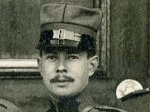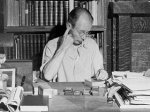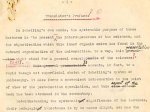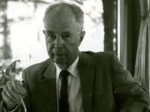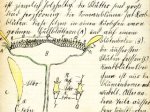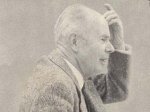MSS Marti
Fritz Marti (1894-1991), was a Swiss-born philosophy professor highly regarded as an expert on post-Kantian idealism. His papers contain a significant trove of correspondence, including letters with such figures as Jacques Barzun, Walter Lippman and John F. Kennedy. The archive likewise features a wide swath of biographical items, research notebooks and unpublished manuscripts. One particular highlight of the collection is an annotated manuscript of Marti's unpublished translation of F. W. J. Schelling's The Method of University Studies.
FEATURED
Get the Flash Player to see this video.
A Brief History of The Marti School.
Miami Valley School, 2004.
Happenstance or Providence: How I found all my jobs.
by Fritz Marti. December 1976.
11 pages.
Quantity
30.2 linear feet; 38 boxes
Arrangement
The Marti collection is divided into three series.
The first series, titled "Individual Correspondence and Articles," consists of letters, newspaper clippings (especially obituaries) and an array of other background materials concerning specific individuals with whom Marti had occasion to interact. Marti's correspondence with his family is held at the end of this series.
The bulk of Marti's scholarly output is located in series 2, "Notebooks, Scholarly Manuscripts and Research Interests." Highlights of this series include the dozens of high school-era research notebooks that Marti saved, as well a substantial collection of scholarly manuscripts dating from the late 1920s to the late 1980s. Special attention likewise has been paid to Marti's work on Fritz Medicus and F. W. J. Schelling.
A wide assortment of materials related to Marti's non-academic life have been arranged into series 3, "Biographical Materials, Organizational Affiliations and Financial Records." Here researchers will find a handful of biographical and autobiographical manuscripts, as well as photographs of Marti, his family and colleagues. Materials related to Marti's upbringing and life-long interest in Switzerland are also located in series 3, as are a small collection of records related to Marti's finances and organizational affiliations, including The Marti School.
Related Papers
A collection of personal papers and components of the personal library of Fritz Marti, with special focus on German Idealism, are housed in the Fritz Marti Reading Room, Office of the German Idealism Yearbook, Department of Philosophy, University of Notre Dame. An itemized list of this donation is contained in OSU's Marti collection.


